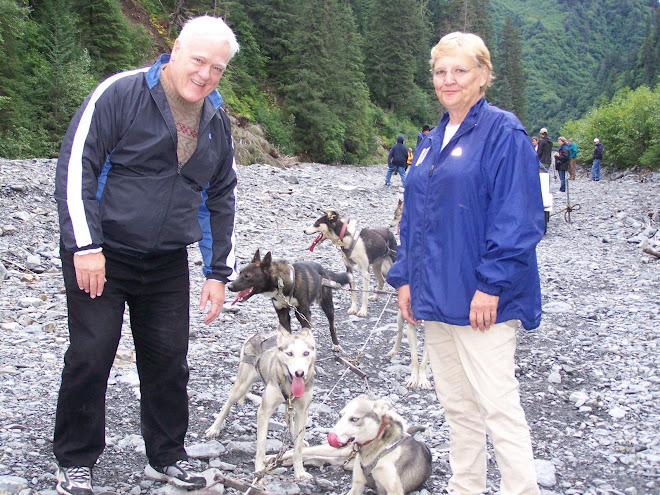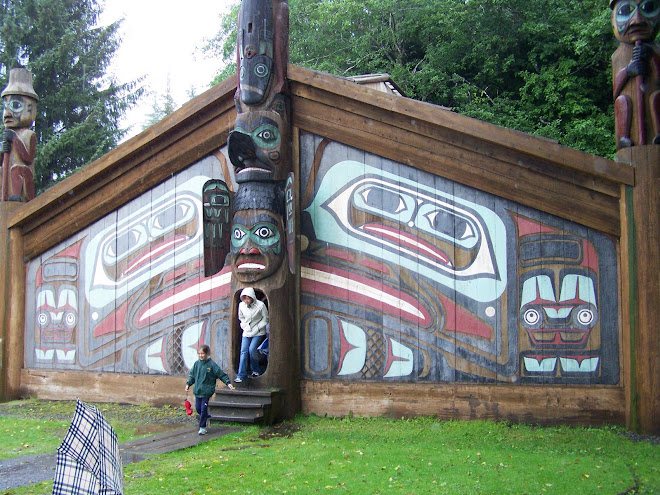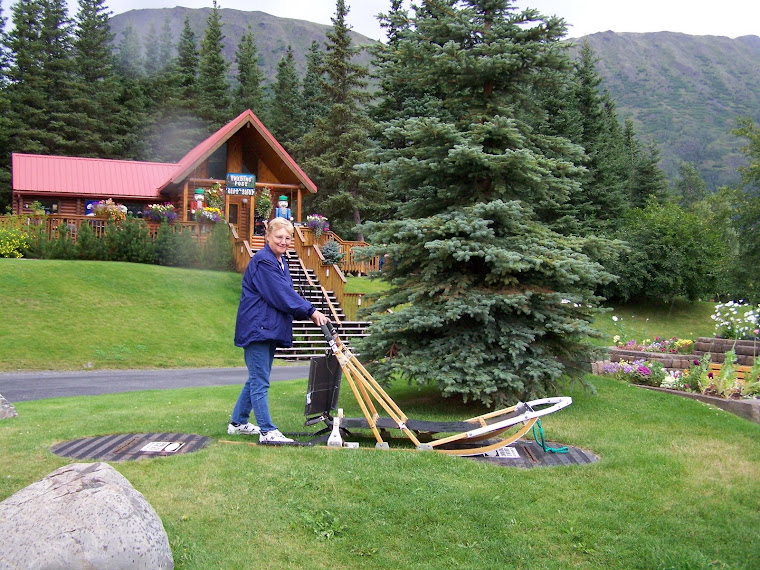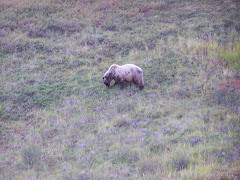
Left: Tlingit men in "regalia"; Chichagof Island
This morning our ship was welcomed by pods of spouting whales as we pulled into Hoonah Harbor on Chichagof Island. This unique, remote and distinctly beautiful place is a large island in Alaska’s inside passage. Its dimensions are roughly fifty by seventy miles and its human inhabitants are eight hundred fifty Tlingit native people in the village of Hoonah.
Our ship anchored in the harbor, and when we went ashore by tender we were greeted by Tlingit people in traditional “regalia” dress. The Tlingits are indigenous to southeast Alaska where their native customs, culture and religion have survived for over a thousand years. We found the people to be friendly, intelligent and welcoming.
Unlike other ports of call, cruise ships have only been visiting Chichagof Island for four years at the invitation of the Tlingits. Only one ship is allowed to visit at a time, as opposed to other ports of call such as Juneau and Skagway where four or five ships from various cruise lines were always present.
Chichagof (chich’-aw-koff) is mountainous and located across from the mouth of Glacier Bay. It is known for its sea life, including whales, seals, dolphins, sea lions, fish, clams and crabs. It is also known for the largest concentration of Alaska Brown Bears in the southeast part of the state.
We enjoyed meeting the native people, viewing their totem poles, hiking trails along the beach and seeing the village of Hoonah. Unlike our other stops, while there were a few small native run shops, there were no glitzy jewelry stores and the other standard tourist fare that we encountered previously.
After a light brunch we boarded a bus with a Tlingit tour guide to see some of the island back country. The island is mountainous and dominated by spruce forests in which some commercial logging occurs. The many fast moving streams are crystal clear unlike the milky blue-gray glacial streams we encountered elsewhere. The streams hold Dolly Varden trout, and were thick with salmon which run up from the ocean stream mouths to spawn. At each steam side stop, we could see literally hundreds of salmon swimming, splashing and jumping as they worked their way upstream to spawn.
The isolation and salmon runs are keys to the bear population. There are over three thousand huge brown bear on the island, one of the densest populations in Alaska. Spotting wildlife is the union of opportunity and chance. Alas, luck was not our friend today as we did not come across a bear, although sign was everywhere and others from our ship had spotted several earlier in the day.
After our tour, we enjoyed fresh caught fried clams in a beachfront café, and returned to the ship to relax and enjoy the view of the harbor. We set sail at 4 pm for Ketchikan, where we will dock tomorrow morning as our last port of call prior to terminating our cruise in Vancouver.





2 comments:
I'm impressed at your dilligence in posting to your site. Excellent writing - a lot like the "Accidental Tourist", but with a lot more colorful musings about your surroundings. It's almost as though you're writing from a brochure - hey - your next career!
Enjoy!
Patty
Hello, Patty, and thanks for your comments. We are home now; the internet connection on the ship left a lot to be desired, so we were not able to process and respond to all comments. Hope all is well; we'll fill you in on our "adventures" soon.
John & Nickie
Post a Comment